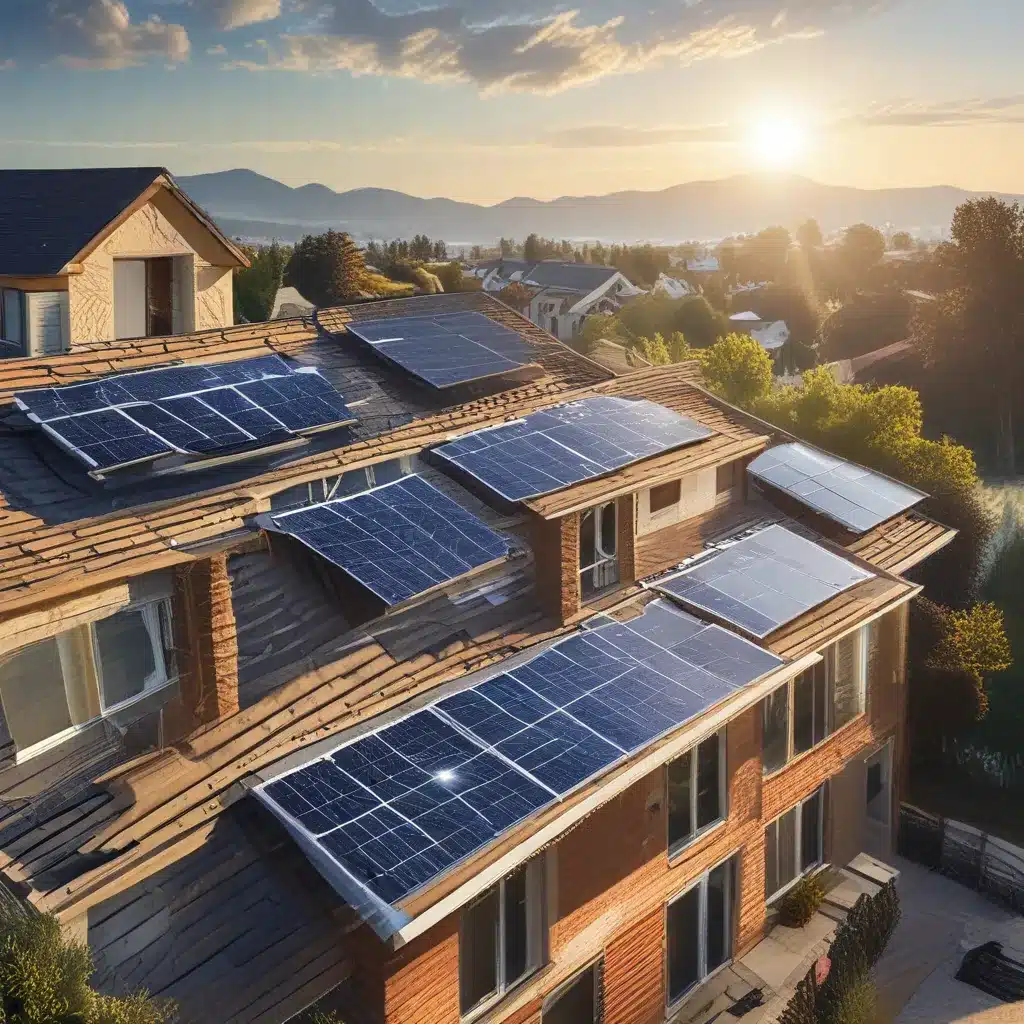
The Solar Surge: A Bright New Dawn
I’ve got to admit, I was a bit skeptical about solar power at first. Growing up, I always pictured those clunky, inefficient solar panels that seemed more like a gimmick than a real energy solution. But let me tell you, the solar industry has come a long way, and the future of residential solar is looking brighter than ever before.
Recently, I stumbled upon some fascinating news that caught my attention. Apparently, solar stocks saw a big jump last week, especially for companies located in the US and other large manufacturers operating outside of China. One big reason for this surge was the Biden administration’s announcement to double tariffs on photovoltaic cells and modules produced in China. This strategic move is part of a broader effort to reduce America’s dependence on Chinese manufacturers and boost domestic solar production.
As someone who’s always been intrigued by the potential of renewable energy, I can’t help but feel excited about the implications of this policy shift. The sun has long been a source of life and wonder, and now it’s becoming an increasingly powerful source of clean, sustainable energy across the globe. Solar technology is rapidly evolving, making it an increasingly attractive option for utilities, corporations, and individuals alike.
The Rise of Residential Solar Power
For decades, solar panels have been synonymous with residential energy independence. But the future of solar power extends far beyond just rooftops. Utilities are now embracing solar for a variety of reasons, deploying various solar solutions to power entire communities. Community solar projects, like the Bright Horizons initiative I came across, are giving homeowners and renters alike the opportunity to tap into the benefits of solar without having to install panels on their own property.
But the solar revolution isn’t limited to the utility sector. Large industrial facilities, including manufacturing plants and data centers, are also turning to solar to reduce their environmental impact and energy costs. Across the globe, we’re seeing a surge in solar adoption as businesses and communities recognize the immense potential of this renewable energy source.
The Solar Transformation: Powering Our Future
According to the International Energy Agency (IEA), solar and wind power are forecast to more than double in the years ahead, breaking new records as they become an increasingly dominant force in the global energy landscape. This growth is fueled by a multitude of factors, from rapidly improving solar technology to the ever-decreasing costs of solar installations.
I’ve been following the advancements in solar power for a while now, and I have to say, the future looks incredibly bright. Imagine a world where every rooftop is adorned with sleek, efficient solar panels, transforming homes and businesses into self-sustaining energy hubs. Or picture vast solar farms blanketing fields and deserts, harnessing the sun’s power to light up entire communities.
This vision of a solar-powered future is no longer a distant dream – it’s a reality that’s well within our grasp. Solar energy solutions companies like the one you’re reading about are leading the charge, developing innovative technologies and making renewable energy more accessible than ever before.
Overcoming the Challenges: Building a Sustainable Tomorrow
Of course, the transition to a solar-powered future isn’t without its challenges. There are still hurdles to overcome, from the need for improved battery storage solutions to the integration of solar power into existing energy grids. But with the right investments, policy support, and continued technological advancements, I believe these obstacles can be conquered.
One of the most significant developments I’ve seen in the solar industry is the increasing affordability of solar installations. As economies of scale kick in and manufacturing processes become more efficient, the cost of solar panels and related components has been steadily declining. This, in turn, is making solar power a more viable option for homeowners, businesses, and communities across the globe.
But it’s not just about the dollars and cents – the environmental benefits of solar power are also undeniable. By reducing our reliance on fossil fuels and transitioning to clean, renewable energy, we can collectively take a significant step towards a more sustainable future. Imagine a world where the only emissions we have to worry about are the ones from our barbecue grills.
A Bright Future Awaits: The Endless Possibilities of Solar Power
As the solar industry continues to evolve and expand, the possibilities are truly endless. We’re already seeing innovative applications of solar technology, from solar-powered vehicles to floating solar farms that can harness the power of the sun while preserving valuable land resources.
And let’s not forget the potential for job creation and economic growth. The solar industry is a rapidly expanding field, with a growing demand for skilled professionals in engineering, installation, and maintenance. This transition towards renewable energy is not only good for the planet, but it’s also creating new opportunities for individuals and communities to thrive.
I’ll admit, I’m a bit of a renewable energy nerd at heart. But can you blame me? The thought of a world powered by the sun, with clean air and a healthier planet, fills me with a sense of optimism and wonder. And as I look towards the future, I can’t help but feel excited about the bright horizons that lie ahead for residential solar energy.
So, if you’ll excuse me, I’m going to go explore the latest advancements in solar technology and start planning my own solar-powered utopia. Who knows, maybe I’ll even convince a few of my friends to join me on this renewable energy adventure. The future is looking brighter than ever, and I can’t wait to see what the sun has in store for us next.


